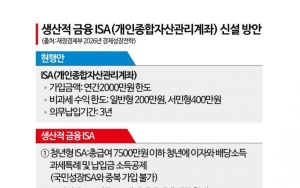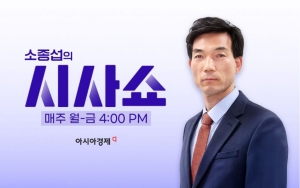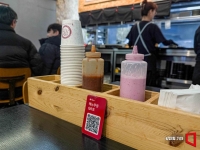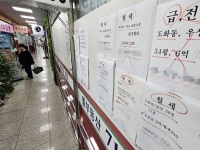런던, 1월11일 (로이터브레이킹뷰즈) - 인도가 인플레에 대해 후행적 모습을 보이고 있다. 최근 식품 가격 상승률이 18%에 달했다는 점 뿐만이 아니다. 현재 인도의 경상수지 적자 규모 역시 불편할 정도로 높은 수준이다. 당국은 앞으로 9% 수준인 GDP 성장률을 희생해서라도 인플레를 억제해야 한다. 완화 정책이 아닌 구조 개혁만이 급격한 성장세를 지속할 수 있는 방법이다.
인도 물가 급등사태의 우선적 원인은 양파값 급등에 있다. 양파는 인도 음식에 중요한 재료다. 다음번 곡물 공급이 몇달 내로 있을 예정이어서 헤드라인 물가는 급락할 것이다. 하지만 인플레가 더욱 전반적으로 자리잡기 시작했다는 신호들이 늘어나고 있고, 이는 결과적으로 인도 경제가 지속할 수 있는 수준보다 빠르게 성장하고 있다는 의미다.
지난 9월 분기에 급격히 확대된 인도의 경상수지 적자를 보라. 골드만 삭스는 2012년 3월로 끝나는 한 해 동안 인도의 경상수지 적자 규모는 GDP의 4.3%것으로 전망했다.지난 11월 인도의 전반적 도매물가 상승률은 7.5%였다. 일부 이코노미스트들은 인도가 임금-물가 연쇄작용(wage/price spiral)의 초기 단계에 있을 지 모른다고 생각한다.
반면 다른 일각에서는 그처럼 급격히 성장하는 경제에서 임금이 오르는 것은 너무도 당연하다고 지적한다. 또 인도의 먹을거리가 점점 풍부해지면서 우유나 고기와 같은 아이템들의 가격도 오를 것이다. 인도가 상대적 물가에서 그같이 큰 변화를 겪는 것은 분명 건전하다. 하지만 그렇다고 해서 평균 물가가 급등하는 상황을 반겨야 한다는 의미는 아니다. 특히나 글로벌 인플레 역시 오르고, 인도가 고유가에 심각한 타격을 입을 때는 더 그렇다.
인도 중앙은행인 인도준비은행(RBI)이후 지금은 긴축 정책을 펼치고 있다. 인도 정부는 재정정책 고삐 역시 죄고 있다. 하지만 레포 금리가 6.25%인 상황에서 실질 금리는 마이너스이고, 중앙 정부를 포함한 주정부들의 전반적 예산 적자는 현 회계연도에 GDP의 7.5%를 차지할 전망이다.
중앙은행과 정부 모두 이번 달 분기별 통화정책 리뷰 및 예산안 발표시 긴축에 대해 추가적인 완만한 접근을 취할 것이다. 하지만 인플레에 선행해야 한다는 다급함은 보이지 않는 듯 하다. 이는 정부가 9%에 가까운 성장률에 이미 중독돼 있기 때문이다. 실제로 영향력 있는 전문가 사이에서는 빠른 성장세를 지속하기 위해 필요하다면 6~7% 수준의 중기 인플레이션율도 합리적 수주이 될 수 있다고 주장한다.
하지만 그같은 생각은 잘못됐다. 성장과 인플레 사이에 중기적 트레이드 오프는 없다. 밀튼 프리드먼이 지적했듯이 만약 한 국가가 생산 잠재력을 뛰어 넘는 수준으로 성장하고 있다면 인플레는 가속화 될 것이다. 정책 관계자들이 종전 합리적이라고 생각했던 4~5%의 인플레 수준이 6~7%가 될 것이고 이후에는 7%를 넘을 것이다. 현재 인도의 인플레 수준도 7%대에서 1년 넘게 꼼짝달싹 않고 있다. 만약 인플레 심리가 뿌리내린다면 그 심리를 없애는 데 많은 돈이 들 것이다. 인도가 경상수지 적자를 메우기 위해 의존하고 있는 글로벌 투자자들의 경우 당국이 트집을 잡고 있다고 생각할 경우 겁먹기 시작할 수 있다.
인도는 향후 10년 동안 9% GDP 성장률을 유지하는 것이 나을지 모른다. 하지만 그것도 부패 척결, 노동시장 자유화, 인프라 투자 활성화 등과 같은 공급 측면에서의 개혁들을 갖고 인도가 더욱 공격적으로 나아갈 때 가능한 말이다. 오히려 인도가 성장률을 더 낮추는 게 나을 수도 있다. 정치인들의 개입에 취약한 RBI가 독립성을 강화하고, 공식적인 인플레 타깃을 정하는 게 바람직할 수도 있다. 그렇지 않고서는 RBI는 인플레와 관련해 정치에 계속 휘둘리게 될 것이다. (휴고 딕슨 칼럼니스트)
** 본 칼럼은 로이터의 편집방향과 일치하지 않을 수 있습니다.
원문기사
-BREAKINGVIEWS-India is behind curve on inflation
(Refiles to clarify food inflation figures in paragraph 1 of considered view)
-- The author is a Reuters Breakingviews columnist. The opinions expressed are his own --
By Hugo Dixon
LONDON, Jan 10 (Reuters Breakingviews) - India is behind the curve on inflation. It's not just that the latest food inflation
18 percent; the current account deficit is also uncomfortably high. The authorities need to get a grip, even if that means sacrificing 9 percent GDP growth in the coming year. Structural reforms, not loose policy, are the only sure way to sustain rapid growth.
An immediate cause of the inflation spike was a sharp rise in the price of onions, an important element of the Indian diet. As the next crop comes through in a couple of months, the headline rate will drop dramatically. But there are increasing signs that inflation is starting to become entrenched more generally -- and that this, in turn, is a result of India's economy growing faster than it can sustain.
Look at the current account deficit, which widened sharply in the September quarter, and which Goldman Sachs
Apologists point out that it is only natural that wages should rise in such a rapidly growing economy; and that as Indian diets get richer, the prices of items like milk and meat will rise. It is certainly healthy for the country to experience big shifts in relative prices. But that doesn't mean it should be happy with sharp increases in average prices -- especially since global inflation is also on the rise, and India will be high crude oil prices.
The Reserve Bank of India, the country's central bank, has tightened monetary policy following the dramatic loosening in the wake of the global financial crisis. The government has also reined in fiscal policy. But with the repo rate at 6.25 percent, real interest rates are negative; and the general budget deficit, which includes the states as well as central government, is expected to end the current financial year at a fairly high 7.5 percent of GDP.
Both the central bank and the government will probably apply further light touches to the brakes when the quarterly monetary budget are announced this month. But there doesn' to get ahead of the curve. This is largely because the government has become addicted to the country's near-9 percent growth rate. Indeed, some influential voices now argue that a medium-term inflation rate of 6-7 percent would be a reasonable trade-off if that is what is needed to sustain fast growth.
Such thinking is misconceived. There is no medium-term trade-off between growth and inflation. If a country is growing at above its productive potential, as Milton Friedman rightly argued, inflation will accelerate: 4-5 percent inflation policymakers previously thought reasonable will become 6-7 percent inflation and then 7 percent plus, which is where inflation has been stuck for over a year. If inflationary psychology gets entrenched, will be expensive to uproot. International investors, relies to finance its current account deficit, could also take fright if they perceive the authorities have a cavalier attitude.
India may well be able to sustain 9 percent GDP growth over the next decade, but only if it presses ahead more vigorously with supply side reforms -- to combat corruption, free up labour markets, infrastructure investment and the like. In the meantime, it would do better to settle for lower growth. It would also be advisable to strengthen the independence of the RBI, which is susceptible to interference by politicians, and set a formal inflation target. Otherwise, be a temptation to play politics with inflation.







!["아내는 연상…원더우먼 같았다" 유산·가난 속에서 함께 버틴 박홍근 의원 '인생 최고의 반석' [배우자 열전]②](https://cwcontent.asiae.co.kr/asiaresize/319/2026010811050883808_1767837908.jpg)
![동갑내기 캠퍼스 커플…"예뻐보이더라" 정원오, 배우자 문혜정 첫 인상[배우자 열전]①](https://cwcontent.asiae.co.kr/asiaresize/319/2026010808171783102_1767827837.jpg)










